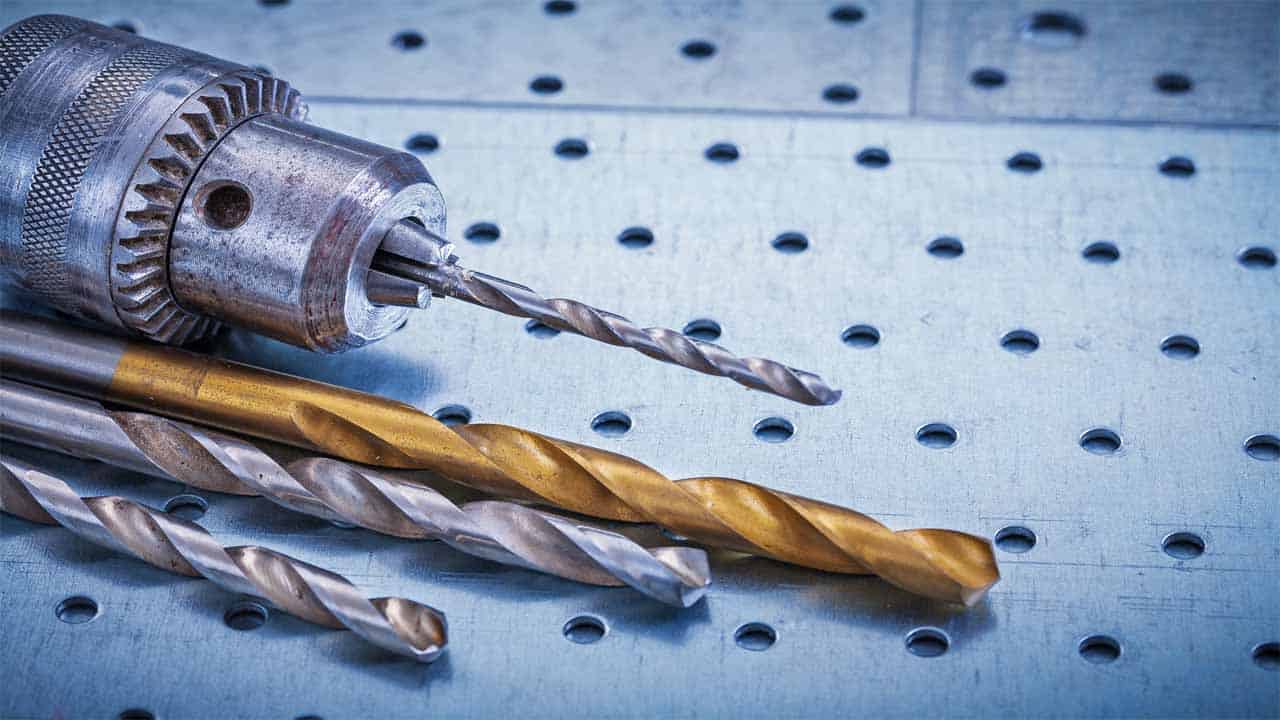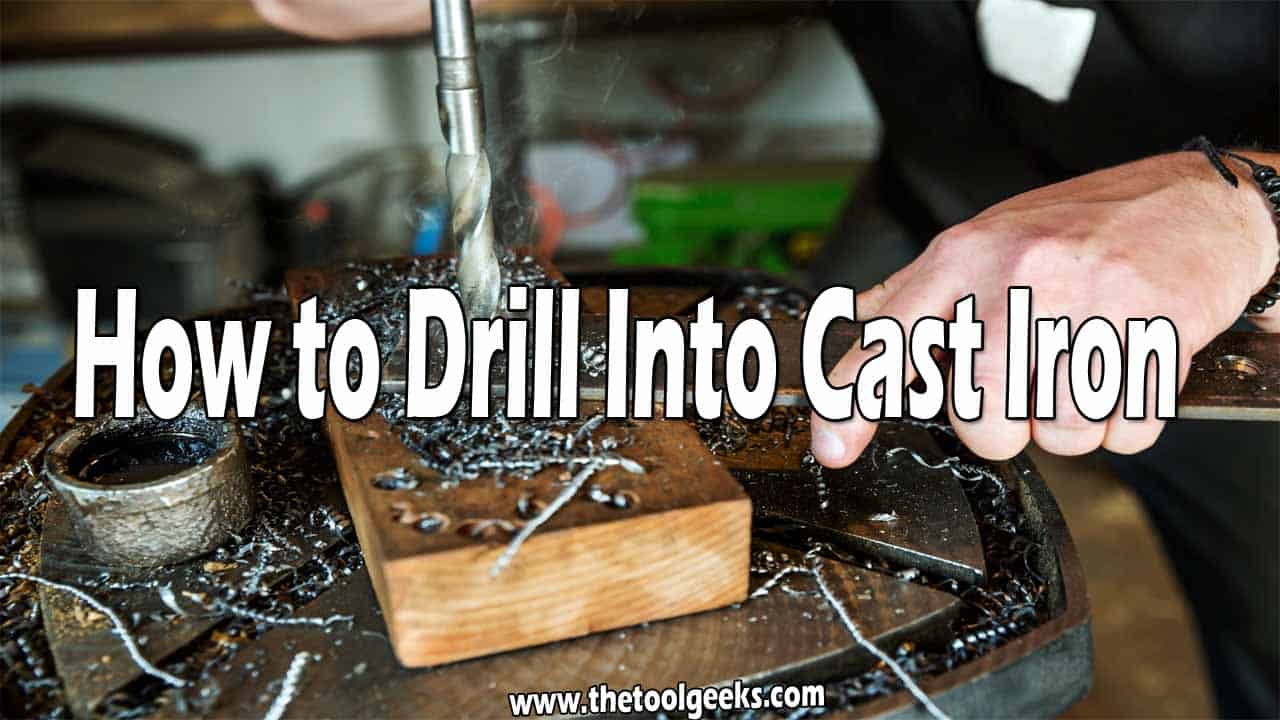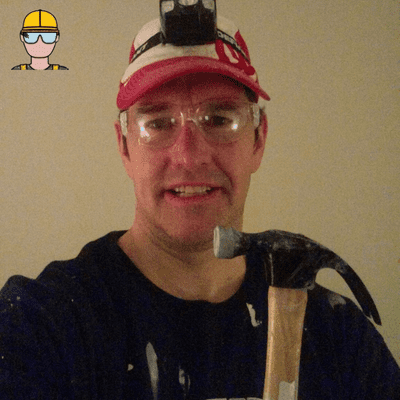How to Drill Into Cast Iron (9 DIY Steps)
TheToolGeeks.com is a participant in the Amazon Services LLC Associates Program and other affiliate advertising programs. We may earn from qualifying purchases. (Learn More).
You’ve completed several DIY home improvement projects, and now your next one calls for drilling into cast iron.
Don’t worry. This is a good metal for drilling! According to most experts, this project should be a breeze. So, how to drill into cast iron?
Unlike other metals, it doesn’t need a specific type of tool or drill bit. Just about any drill bit that’s made for metal will suffice for cast iron. This metal is more malleable than others, so it’s relatively easy enough to drill through when it’s properly done.
It’s a durable yet brittle material that’s strong enough, so you don’t need to worry about it breaking. Additionally, you also don’t need to worry about too many metal shavings or debris from drilling into cast iron. Other metals can make a lot more of a mess. Cast iron is an excellent place to start for someone new to metal drilling.
Keep these steps and tips in mind for a smooth drilling experience. Your project should be completed successfully, and you’ll be happy you were prepared!
Can You Drill Through Cast Iron?
Yes! It’s definitely possible to drill through this brittle metal. You need the right tools and the right procedure. If you’re prepared and follow our drilling guide, then you’ll be drilling through cast iron easily.
How to Drill Into Cast Iron
Gather The Needed & Safety Tools
Here’s a list of the things you need:
- Goggles
- Leather or canvas work gloves
- Earplugs
- Drill
- Drill bits
- Permanent marker
- Lubricant/ cutting fluid
- Scrap wood pieces
- Old rags
- Center punch
- Hammer
- Clamps
- Nails/ screws
Also, grab a pair of helping hands. It may seem like an easy enough job, but having a friend to help pass tools or items is always a boost.
And definitely do not forget to use all the necessary safety gear for both of you. Unlike wood or masonry drilling, there will not be dust when drilling into metal, like cast iron. Instead, you’ll have lots of sharp, pointy metal shavings, which are dangerous, especially for the eyes.
Make sure you have proper work goggles. Exceptional goggles will cover your eyes and even part of your nose, your ears, and your temples. If your goggles do not cover your ears, then use earplugs. Grab a pair of heavy-duty leather work gloves too. These will protect you from tiny cuts or, worse, mini slices from the sharp edges of the metal flakes and strips.
Related Read — How to Drill Into Metal?
Measure, Mark & Indent
After you verify all safety systems are ago, let’s get started with the metal. Carefully measure where you intend to make a hole on your cast iron.
Then using a permanent marker, clearly mark the location. Do not guess or estimate; you need to be confident where the hole should be. We’re making a permanent change to the cast iron; it won’t be easily fixable if we make a mistake.
Next, you’ll use a hammer and a center punch to make a slight depression into the cast iron. This dimple will give the drill bit a small valley to limit its wandering. It aids the drill bit in puncturing the metal. You can also use a small nail that’s hard enough if a center or pointed punch isn’t available.
Choose & Attach Drill Bit
Which drill bit should you use? To be honest, any drill bit that is suitable for metal is applicable for drilling cast iron. Any high-speed steel bit for metal, step bit for metal, or even some twist bits will work.

Drill bits that are made for wood will be destroyed, and masonry drill bits won’t be able to penetrate into the metal. Basically, any bit for metal will work for cast iron. Black oxide drill bits, cobalt steel drill bits, and titanium nitride coated drill bits are all great options.
You’ll want to prepare various sizes of drill bits so we can gradually increase to the necessary diameter.
Related Read — Best Battery Drills
Clamp, Clamp, Clamp!
A table vice is a crucial tool for this project. You need to stabilize the cast iron. It must be held in place to prevent any accidents. As you’re drilling, the bit may catch onto the metal, and it can cause the cast iron to spin or jerk erratically.
If the metal is connected to an immovable object, then you don’t need to worry about a clamp. But since this is rarely the case, you need a brace to prevent potential disasters. A sharp spinning metal edge can result in stitches. It will literally slice into you. We recommend a minimum of two clamps on each side of the metal.
Never hold the metal in one hand and drill with the other, or ask someone to hold the metal while you drill. Anchor it properly with a table vice or brace.
Additionally, you’ll want to clamp wood scrap above and beneath the metal if possible. This works very well with metal sheets. It keeps it flat and stable. The scrap on top will secure the metal. It makes it easier to drill into the cast iron as it reduces any wandering. It makes for more precise and accurate holes. The wood scrap beneath the metal offers protection from over-drilling.
Drill Pilot Hole
The pilot hole is a small hole first drilled before reaching the diameter of the hole needed for the project. The aim of a pilot hole is to provide the drill with something to grip onto when enlarging the hole.
This is necessary because often, the drill will wander around the indented area without puncturing into the metal. The pilot hole is basically the puncture, and then you gradually increase the width of the hole until you reach the desired measure.
To drill the pilot hole, you hold your drill upright and perpendicular to the marked location. Make sure to avoid any angles as that can mess up the hole, resulting in a badly held screw or mount.
You start with the smallest drill bit. A smaller tip is sharper, so it’s easier to pierce through the metal without so much moving around. If you find that the drill is not digging into the metal, then start with an even smaller drill bit if available.
Continue Drilling
Once the pilot hole is successfully completed, now you can start drilling with larger drill bits. Experts recommend increasing drill bit size 1/8th of an inch at a time until you reach your required diameter.
You can even step up at smaller intervals, but it’s best not to make larger jumps. When drilling, you want to start slow and keep the pressure low.
This is because you want less friction and less speed. With less friction, your drill bits won’t get fried. They won’t become as dull as quickly. Less speed is to prevent the drill from overheating.
Machinists advise that 1000 RPMs is a good speed, but definitely do not go more than 3000 RPMs. Of course, this is a rough guide. You’ll have to observe and adjust accordingly to what your drill and drill bit is doing.
The key rule of thumb to remember is to start slow and start low.
Related Read — 18V vs 20V Drill Batteries?
Stop & Reverse
Check the depth of the cast iron to confirm how far you’ll be drilling into the metal. If you drill too far behind it, then you’ll damage whatever is underneath. This is why we had clamped the wood scrap before. Use a ruler and a leveler tool to help you determine the right depth.
After stopping, you want to deburr the hole you just made. To do this, you reverse the drill and move it back and forth a couple of times within the opening.
This will remove any leftover metal shavings and smooth out the edge. It makes everything smooth. Without this step, the debris and unevenness will hinder the grasp of the screw.
Clean To Remove Metal Shavings
We advise a 3-step cleaning process: dry, wet, dry. Wipe the surface with a dry rag first to remove any peelings. Then you wipe with a wet cloth to pick up anything you may have missed the first time.
Lastly, you wipe with a dry rag again to remove moisture (and also as a final measure to ensure there’s no debris left). When wiping, try to clean inside the hole as well. The screw will have a better hold on a clean hole with no metal fragments.
Absolutely keep your safety gear on while cleaning. Wipe excess cutting fluids with a rag too. Never wipe on your hand or clothes. This can be dangerous. The metal shavings are sharp, and they can cause injuries. Many people overlook this part and later realize they have tiny cuts that sting or burn.
Related Read — How to Sharpen Drill Bits?
Complete All Remaining Drilling
Complete drilling any other holes you have marked. Use extra cutting fluid as needed. Do not let the friction warm up the bit too much. The fluid will also keep the metal shavings weighted down.
So, apply lubrication in between holes, and sometimes even while drilling a hole. Also, drill slow and drill low. Don’t rush or apply too much pressure to try to drill faster. More friction can heat up bits quickly. Remember, hot tools mean dull tools soon enough!
Related Video— Drill Cast Iron Easy With Carbide Annular Cutter Drill Bit
Tips & Tricks About Drilling Cast Iron
Using Cutting Fluids and Lubrication
Experts vary on the best method regarding lubrication. On the one hand, most people say you should use cutting fluids no matter what. On the other hand, many people suggest that cast iron is primarily carbon and is self-lubricating.
High carbon acts as a lubricant itself. But this is only good for one or two holes. So, if you are drilling just a couple of holes, then you don’t need to use lubrication.
However, if you need more, then it’s unanimous that you should use cutting fluid. It can be messy, but it has a great deal more benefits. Just a few drops can greatly extend the life of your drill bit.
Cutting Oil Do More Than Just Lubricate
The fluids keep reducing friction which decreases heat and keeps the drill bit from dulling sooner. But that’s not all; they also weigh down metal shavings from drilling, which can prevent accidents.
It’s a good idea to use oil to make sure these metal fragments aren’t flying about. Conveniently, if you don’t have cutting oil around, regular motor oil will work. Even WD-40 may work in a pinch, but this isn’t wholly advisable.
Avoid Smoke
If you notice there is smoke, then you’re drilling too fast, applying too much pressure, not using enough lubricant or some combination of all of these.
You need to immediately stop drilling, let the tool and metal cool down, add most coolant, and then resume drilling but with less pressure and at a slower speed this time. Take more breaks while drilling to keep the tools cool.
Watch Out for Hard Spots
Cast iron often has certain random spots that are harder than others. These hard spots can break a drill bit. Just keep an eye out. Don’t apply extra pressure when you come across these areas.
Related Read — How to Drill Into Granite?
Prioritize Safety Gear
It cannot be emphasized enough how important it is to have the necessary safety equipment. Drilling can be really easy, but accidents take less than a second. Be prepared and safeguard yourself. Gather your goggles, work gloves, and earplugs.
Just a note that not any glove, like a kitchen glove or latex glove, will be effective. You want thick, durable leather or canvas gloves for protection from the sharp edges of metal.
Also, it’s a good idea to wear denim if possible. A long-sleeved denim jacket and jeans will go a long way to providing a sturdy shield for your skin from any accidental cuts.
Stay safe, and happy drilling!
Amazon and the Amazon logo are trademarks of Amazon.com, Inc, or its affiliates.

